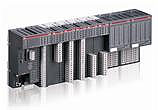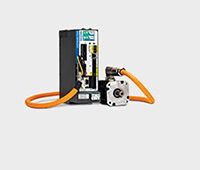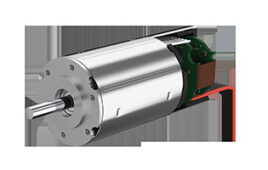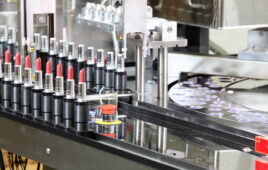 ABB has launched a new safety PLC offering exceptionally flexible and powerful programming facilities that speed and simplify the development of safe control solutions for the most complex control applications. The safety PLC – the AC500-S – is a new addition to ABB’s well-known AC500 PLC range and features a dual processor architecture that complies with SIL3/PL e functional safety levels. Prior to commercial release, the new controller has been extensively field tested over three years in some 10 pilot applications including different types of cranes, mining hoists, automatic guided vehicles, and robotics.
ABB has launched a new safety PLC offering exceptionally flexible and powerful programming facilities that speed and simplify the development of safe control solutions for the most complex control applications. The safety PLC – the AC500-S – is a new addition to ABB’s well-known AC500 PLC range and features a dual processor architecture that complies with SIL3/PL e functional safety levels. Prior to commercial release, the new controller has been extensively field tested over three years in some 10 pilot applications including different types of cranes, mining hoists, automatic guided vehicles, and robotics.
Among many pioneering features for the safety PLC market segment, ABB’s new AC500-S includes support for Structured Text (ST) programming – in addition to conventional graphical function block diagram (FBD) and ladder diagram (LD) software. This provides users with a high level programming approach that can greatly simplify the development of solutions for sophisticated applications requiring complex algorithms and mathematics. The feature is complemented by the inclusion of a powerful suite of functions for trigonometric calculations, including COS, SIN, TAN, ASIN, ACOS and LOG. The mathematical capability is ideal for ensuring safe control of movement in applications involving complex kinematics – such as on cranes, hoists and manipulators.
Existing AC500 PLC users can convert to safety PLC architectures, and start programming applications very easily using the new PLC. This is because ABB already includes support for the safety PLC programming in its CODESYS-based integrated development environments for control, motion, robotics and HMI. The new safety PLC hardware also shares the same look and feel as ABB’s standard AC500 PLC family for non-safety applications, as well as identical dimensions to standard ABB CPU and I/O modules, and the same mounting and wiring scheme. Both types of modules may be mixed in the same PLC, allowing it to perform both safety and non-safety functions. This can reduce the complexity and cost of many projects, and open up new options for applications such as direct variable mapping and data exchange between safety and non-safety elements of the control system.
To support the development of safety related applications, ABB has developed its own safety code analyzer tool, SCA, to verify the safety programming rules or guidelines according to IEC 61508-3 under FBD, LD and ST. This powerful tool – believed to be an industry first – has been certified by TÜV SÜD, who subjected the software to stringent tests. The results are documented in a technical report, which verifies the analyzers features, compliance with standards, and performance in terms of syntax analysis of safety application source code. A valuable side effect is PLC code that is more reliable, better structured, and more easily readable, which contributes to lower certification effort and post-release maintenance costs. Lower costs and faster development are further aided by the AC500-S safety programming editor’s support for the well-known PLCopen Safety Library – which includes all the standardized function blocks used in safety applications such as E-Stop, Mode Selector, Two-Hand-Control, etc. AC500-S additionally supports the entire range of IEC data types, giving programmers much greater flexibility.
Unlike some safety PLCs on the market, ABB’s AC500-S Safety PLC has a separate safety processor. The Safety CPU can be configured to work even if the non-safety processor is in STOP or maintenance mode, or during an online change. The dual processor architecture means that users can easily upgrade the performance of a safety PLC during its lifecycle by plugging in a faster non-safety CPU module. ABB offers a choice of SIL3/PL e certified safety I/O modules including digital input and outputs, and a dedicated analog current input module covering the 0-20 mA (or 4-20 mA) range. The latter module makes it possible to measure parameters such as pressure, temperature, position and torque on applications directly – without any need for A/D conversion or proprietary electronics. This can simplify the implementation of a wide range of safety-related machinery control applications such as braking systems in hoists and lifting equipment, to positioning systems and temperature control on cranes, and selective shutdown systems on wind power turbines.
To simplify system design, safety-related control modules may be installed as part of the main PLC solution, or be sited in a remote I/O rack linked using the PROFINET/PROFIsafe protocol. Network-connected control systems like this save cabling and assembly costs, and avoid problems with interference. Moreover, ABB’s I/O modules include integral power supplies, reducing hardware costs and space requirements compared to some other PLC vendor approaches.
One other valuable option for safety related control system designers, is the availability of safety PLC modules in ABB’s renowned XC ‘extreme conditions’ variants. This option allows users to configure functional safety PLC solutions that are also ruggedized and suitable for operating in harsh conditions and extreme climates – as are commonly found on crane, winch and wind power applications for instance.
ABB
www.abb.com
Filed Under: INDUSTRIAL SAFETY SYSTEMS, MOTION CONTROL, PLCs + PACs





Tell Us What You Think!